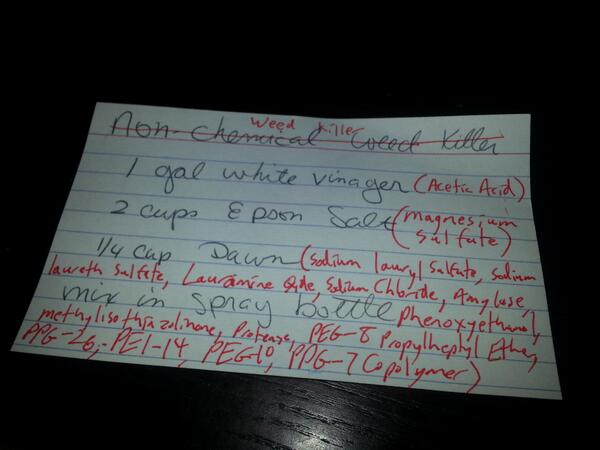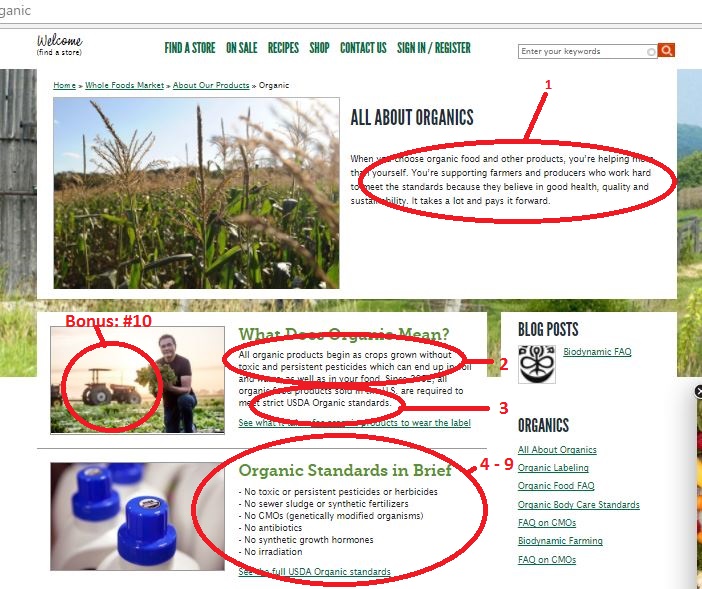Social media changed all that. Facebook and Twitter became hotbeds of misinformation because anti-science activists mastered creating 'buzz' by getting cabals of individuals, sympathetic journalists, and groups who capitalized on it to swarm around bombastic claims. Now those tweet storms become 'and here's how Twitter reacted' articles by lazy media outlets.
Do you believe the "non-chemical" weedkiller below has no chemicals? You probably wouldn't be reading here, but Facebook groups share these "all natural" recipes readily, because people who don't understand science may believe it. That's not an insult, we've become removed from everyday science to such an 80 percent of people want any food that contains DNA labeled now. The modern world has become so safe most people no longer need to know how it works.
And that's even in America. With under 30 percent adult science literacy, we still lead the world so it's little surprise Europe is even more scared of science than we are, and Asia is home to alternatives to medicine.
Social media created a closed thought system for tribes using unlimited freedom of information. Social media amplified a lot of things we long knew about science literacy; fewer than 30 percent of people have it. And the rest spread what they hate or, more commonly, don't understand.

All of the chemicals in a popular alternative to glyphosate or atrazine or 2,4-D. All of them are worse for the environment than actual scientifically approved weedkillers.
Yet most people are not fixed in their beliefs, they are not really anti-science, and greater digital literacy - such as knowing sites like this exist instead of getting their "science" from Mother Jones or Huffington Post - will help. While many were willing to believe the original flashcard above because it had words like salt and vinegar, almost all laughed when shown the plastic had chemicals, and the rest of the ingredients were clearly chemicals using common names.
They changed their minds.
Plenty of wealthy coastal "Karens and Darrens" who only buy organic and wouldn't get their kids a measles shot a few years ago are calling for a vaccine against coronavirus and for usage of masks with a fervor they once reserved solely for keeping gluten out of schools. That is progress, and it is thanks to no small amount of social pressure, affirmed by ubiquitous digital media. While they may not have greater science literacy, they have digital literacy, and that made all the difference.
The experiment
Perhaps we could have greater interventions and campaigns. They don't always work, the war on drugs 'cracked egg this is your brain on drugs' campaign was fantastic but we have recreational fentanyl overdoses now just like we had crack overdoses then.(1)
Yet improving digital literacy did improve the ability to discern fake news in recent results. The experiment, conducted in two instances, to see how critical thinking was improved immediately and longer term, used a nationally representative sample in the U.S., because almost everyone has virtually unlimited digital access, unlike much of the world, and then educated elites in India. The improvement in ability to see through fake headlines was only 17.5 percent in India but that is likely because the demographic baseline had higher education. For the U.S. it went up 26.5 percent using a more diverse cross-section.

Credit: www.pnas.org/content/early/2020/06/17/1920498117
Those results are compelling. There are a number of people in the U.S. who still believe that organic food is somehow more "nutritious" than regular food. Whole Foods has spent decades lying in their marketing and claiming organic food uses no pesticides(2), so that isn't lack of scientific awareness on the part of the public, it is simply FDA and USDA unwillingness to crack down on fraud.
People buying non-GMO cat litter, though, they need educational help. Along with those buying the 67,000 other labels that Non-GMO Project sells to companies by showing in marketing documents that a whole lot of people don't know any better.
Citation: Andrew M. Guess, Michael Lerner, Benjamin Lyons, Jacob M. Montgomery, Brendan Nyhan, Jason Reifler, Neelanjan Sircar, 'A digital media literacy intervention increases discernment between mainstream and false news in the United States and India', Proceedings of the National Academy of Sciences Jun 2020, 201920498; DOI: 10.1073/pnas.1920498117
NOTES:
(1) Given recent race demonstrations a lot of past events will get an awkward rethink. In the 1980s, a whole lot of people dismissed "crackheads" as choosing their fate whereas with fentanyl we got it framed for us as an "opiod epidemic" created by lax doctors and aggressive pharmaceutical companies. The big difference; media showed a whole lot of white fentanyl junkies as "victims" while people of color in the 1980s were spun as unable to control their impulses.
(2) See here for the details.





Comments